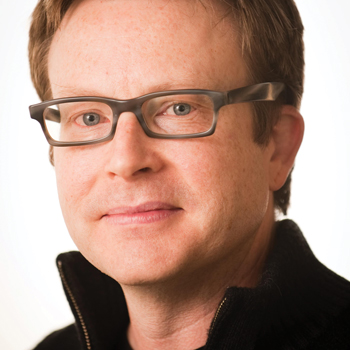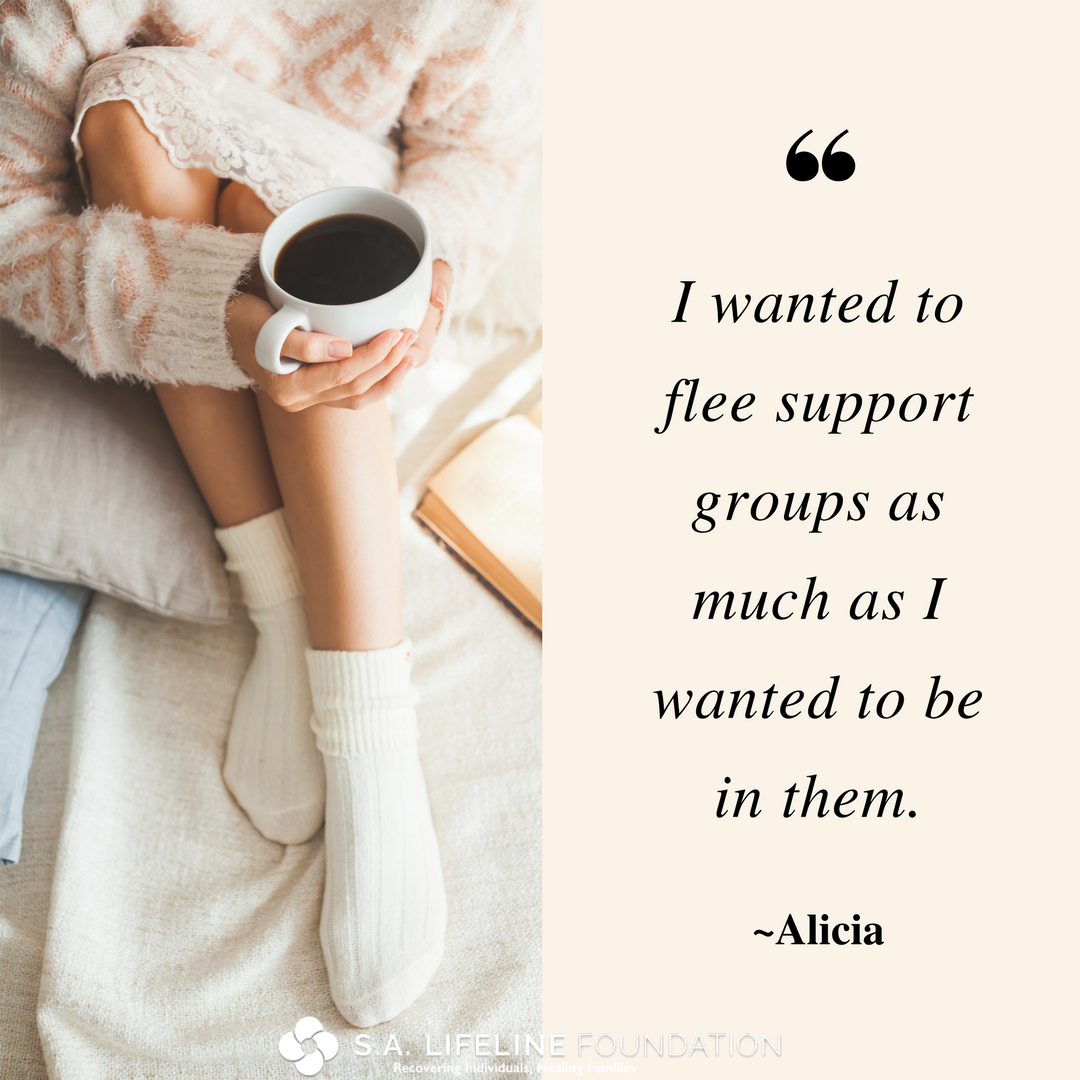Last week, in Alicia’s beautiful post entitled Manifestations of Healing, she shared her long journey toward recovery. I was struck by one of the statements she highlighted: “I wanted to flee recovery groups as much as I wanted to be in them.”
 I have spoken with many women who have felt the same way: “I am reading the books, writing in my journal, and even have met with a therapist. Do I really have to do this support-group thing to find recovery?”
I have spoken with many women who have felt the same way: “I am reading the books, writing in my journal, and even have met with a therapist. Do I really have to do this support-group thing to find recovery?”
This week, I was able to hear a fabulous address entitled “Toward Sustainable Happiness,” by Elisha Goldstein, PhD. The address was given at the 2018 Mindfulness and Meditation Summit, and focused on the ways that neuroscience is discovering what people really need to find and sustain change in their lives. As women who have experienced betrayal trauma, I felt his research was particularly applicable to us.
After all, “No matter how we tried to struggle against it, deny it, or minimize its effects, the failure of our efforts to cope with sexaholism brought us to the point of despair.” Certainly, if anyone needs help to understand ways our brain can help us to move toward sustainable happiness, we do!
 Goldstein cited 2 research studies that emphasized the importance of social connection in neuroplasticity–in other words, the ability of the brain to actually change and create new pathways, different ways of doing life, or like my husband and I like to call it, a “New Normal.”
Goldstein cited 2 research studies that emphasized the importance of social connection in neuroplasticity–in other words, the ability of the brain to actually change and create new pathways, different ways of doing life, or like my husband and I like to call it, a “New Normal.”
Jim Cohen of the University of Virginia conducted a study where he sent women into an MRI and then shocked them during the test. He was looking at the hypothalamus, the part of the brain that registers a stress response, as the women were shocked. The interesting thing was that the hypothalamus cooled way down when the woman was holding a hand of someone when she was shocked–even the hand of a stranger. His study brought empirical evidence to demonstrate that physical touch and social connection are extremely important in helping the brain process stress.
Maryann Diamond, out of UC Berkeley in 1989, also produced research to show how social connection affects the ability of the brain to change and adapt. Diamond put mice into 3 cages: one that had toys and friends, one that had just toys alone, and one with nothing at all. After spending time in their respective cages, she had these mice run races. Her findings demonstrated that the mice that were with both toys and friends ran the race much faster than the other mice. They were best able to learn the race. Their brains had more “plasticity” to make new pathways.
This research also brought to light the fact that both social connection and playfulness are part of an enriched environment for the brain. This rings true as I think of my 12 Step Group, where we are able to laugh and play about things that are just so serious and heavy! What a relief to feel the tension ease for a moment, and be able to belly-laugh with women who know exactly what I am talking about!
In light of this and other research, Goldstein cited 3 strategies to create Long-Term Positive Change.
Create Positive Social Cues
This means surrounding yourself with people that inspire you to live true to the changes you want to make in your life. The research shows that the more interactions you have with people who support your movement to a healthier being, the more likely you are to stick with your program and actually see results in your life. (Sounds like 12 Step to me!)
Environmental Cues
Goldstein’s research also found that the more “reminders” people put in their environment, the more successful they were in actually practicing their program. For me, this has meant that I have put up quotes, artwork, or wear jewelry that remind me of recovery. The more I see recovery reminders around me, the more chance that I will actually remember to surrender in the moment of distress.
One specific practice he mentioned was to incorporate pairing practices, which means to pair something you do routinely in your natural environment with a recovery practice. For example, maybe every time I stop at a red light, I will take 3 deep breaths and check in on the condition of my heart space–do I feel open and peaceful, or tight and anxious? Or perhaps every time I walk through a door, I recite a helpful recovery mantra. This idea of pairing routine with recovery seemed like a helpful way to incorporate a “New Normal” into the logistics of daily living.
Get a Mentor/Sponsor
Wow! I was so excited to hear PhD Goldstein actually use these words. I have seen the fruits of this recommendation in my own life. The strength, hope, and experience of my Sponsor is an invaluable and irreplaceable part of my journey to recovery. I cannot imagine my path without her, not only for her insight and wisdom, but also because our relationship has kept me accountable to work my program and stay on my path.
The X Factor
As his last and most emphatic remark, Goldstein declared with passion that, according to brain research and empirical data, THE X factor for Sustainable Change is simply this: Human Connection.
Do I really need to come to a group to recover from Betrayal Trauma?
The Science speaks for itself.
Science aside, I can also offer my own strength, hope, and experience. I can speak as someone who for years felt that I was “too busy” to add one more thing to my plate and that I didn’t need a support group for HIS problem.
Today, I count the sisterhood I feel at my 12 Step meetings as one of my life’s greatest blessings. Whether online or in-person, the people in these groups have become my sisters, and my truest friends. They are my inspiration, my connection, and a stable net to catch me when I fall. When I feel that God has abandoned me, I go to Group, and know that I am not alone. I see Him in every face in that circle.
If you have resisted the idea of attending meetings, try trusting the research, taking a leap of faith, and giving it a try for 6-8 weeks. You have nothing to lose but an hour of your day.
We’d love to hear how your 12 Step Group has changed your life. Please share in the comments below!








This is POWERFUL information!
How do we join these discussion groups? Are they different from the SA group meetings online? Are these meetings online? I can’t find any specific info on this website. Thank you.
The groups this post refers to are the SAL group meetings you can find under the “Find a Meeting” link. You will find both in-person and online options there. The Discussion Board, or Blog, is open to anyone, and is another way to reach out and feel a sense of community and connection. Please let us know if you have any other questions we can help with!
What is the difference between a Mother’s meeting and a women’s meeting?
Working the 12 Steps is always a spiritual program of personal growth, where we focus on our own actions and reactions. However, the principles of the 12 Steps can be applied in all of our relationships. In the Mother’s Meeting we focus on working the 12 Steps from a parenting perspective. The regular Women’s meetings focus on the 12 Steps of recovery from betrayal trauma. These meetings tend to focus more on our relationships with ourselves, God, and the addict.Let me know if you have additional questions. I am happy to help!
I need to find a sponsor here where can i find one
The best place to find a sponsor is by regularly attending your 12 step meeting and finding someone who is further in recovery than you. As you attend your meeting you will likely find some people who you respect in recovery and feel connected to.
Wish there were groups in Iowa. I don’t think online gives you the same help.